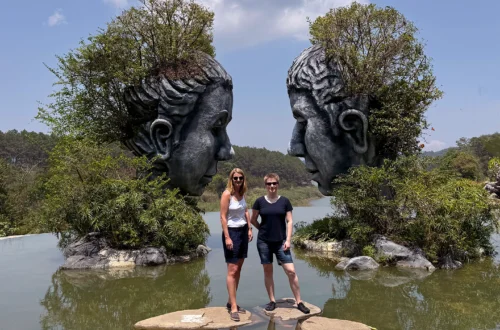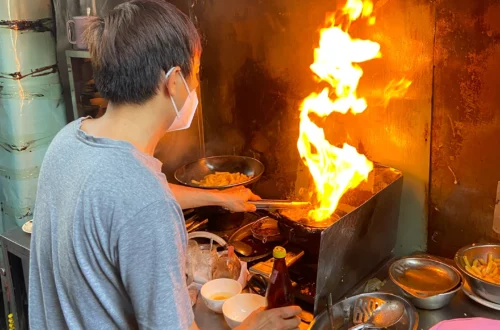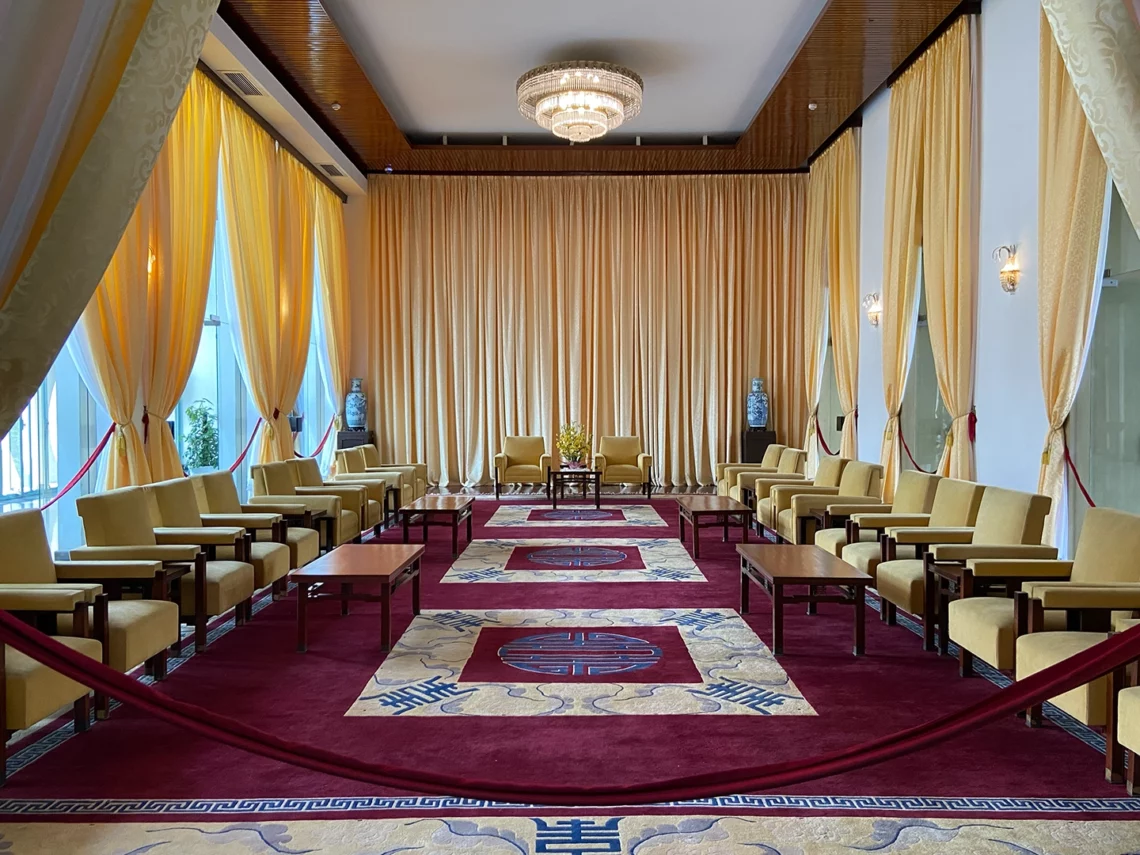
Visiting the Independence Palace in Saigon
The site has seen French occupation (twice), Japanese occupation, the “Republic of Vietnam”, a coup d’état and not one but two wars that were decided right on its doorstep. If only walls could talk… visiting the Independence Palace in Saigon would be even more fascinating. Once the home and workplace of the president of the Republic of Vietnam until the end of the Vietnam war. Today you can visit it as a museum and learn about the life and politics of the time between 1868 and 1975.
I will first touch on the history of this place, if you aren’t interested in that and only want to know what to consider before your visit and if and why I think this place should be on your itinerary click here to scroll down to that part.
History of the Independence Palace
Disclaimer: This is a short version of events that happened at this location in the last ~140 years. By no means do I claim that this overview will give you a comprehensive understanding of the political intricacies behind these events. If you want to know more, read up on it from several sources to avoid a version steeped in propaganda from either side.
The get the full insight into the history of the Independence Palace in Saigon you can visit today, you have to go back to 1868. Ten years after the French invasion of Vietnam the French authorities built a governmental seat in Saigon. Back then the headquarter of Indochina (what the French colony of southern Vietnam was called back then) was called the “Norodom Palace“.
Near the end of WWII Japanese forces overthrew the French and set up their headquarters in the Norodom Palace as well. Half a year later the Japanese (along with the Germans, etc.) lost the war and the French returned to occupy their colony once more.
Following their defeat in 1954, at the Battle of Dien Bien Phu, the French signed the Geneva Accords and withdrew from Vietnam. The then established “State of Vietnam” was recognized as a sovereign country by 88 other nations.
As a representative of the Saigon regime Ngô Đình Diệm renamed the Norodom Palace to Independence Palace. A year later he deposed of the former head of state and “last Emperor of the Nguyen Dynasty” Bảo Đại, established the “Republic of Vietnam” and proclaimed himself president.
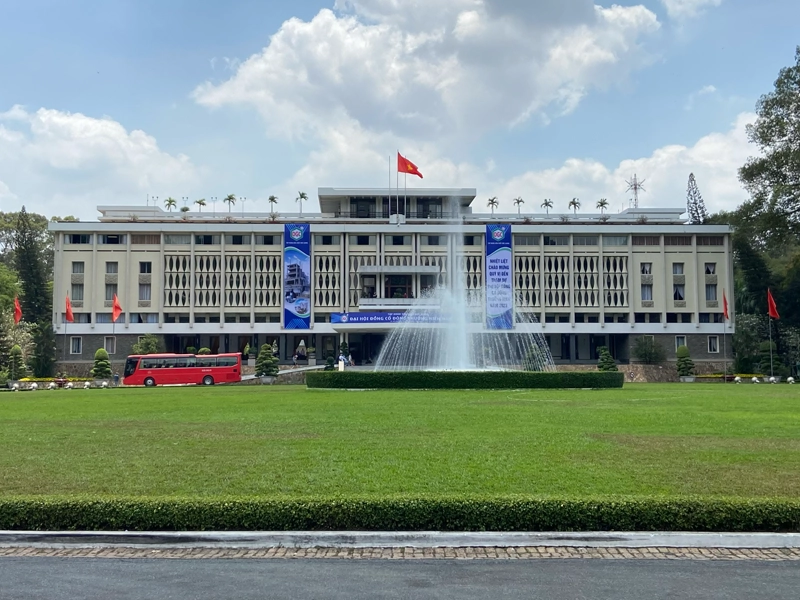
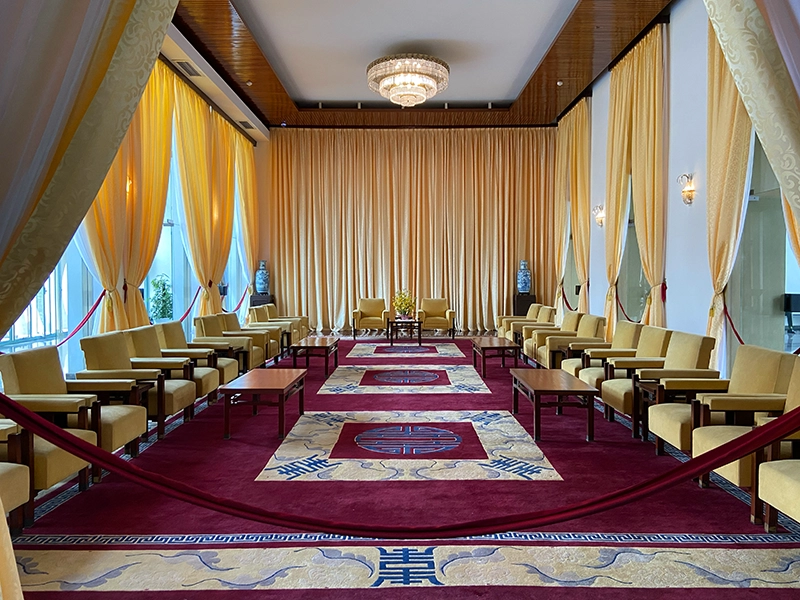

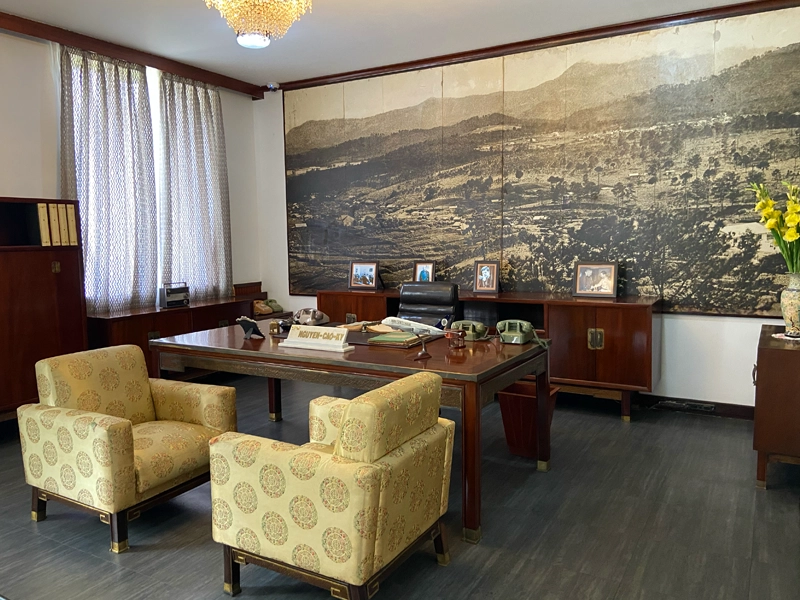
The building you can visit today was built in in 1962 to replace the old palace, which had been destroyed by dissident nationalist south Vietnamese fighter pilots, who tried to assassinate autocratic ruler Diem, his brother and advisor Ngô Đình Nhu, and the rest of the nepotistic ruling family.
Under the the Ngo families rule Catholics were favoured over Buddhist in all aspects of life: Promotions within the army and government facilities, tax concessions, business favours, business contracts and more. This lead to tensions within the population and eventually wide scale protests. During such a protest in June 1963 a Vietnamese Buddhist monk set himself on fire on a busy intersection of Saigon, to protest the mistreatment of his fellow Buddhists.
In August of the same year the ARVN Special Forces under orders of Ngô Đình Nhu raided and vandalized Buddhist pagodas across the country. Thousands of monks were arrested and the death toll was estimated to be in the hundreds. At the same time concerns over the handling of the North Vietnamese Communists and Viet Cong threat to South Vietnam, by Diệm, let to further turmoil.
These tensions in all levels of the population and government eventually lead to a coup d’état, where a group of high ranking military officers overthrew the government in a CIA backed operation. Following these events (and they are much more complicated than I could ever write here, seriously, read up on it) the south of the country was ruled by several military juntas.
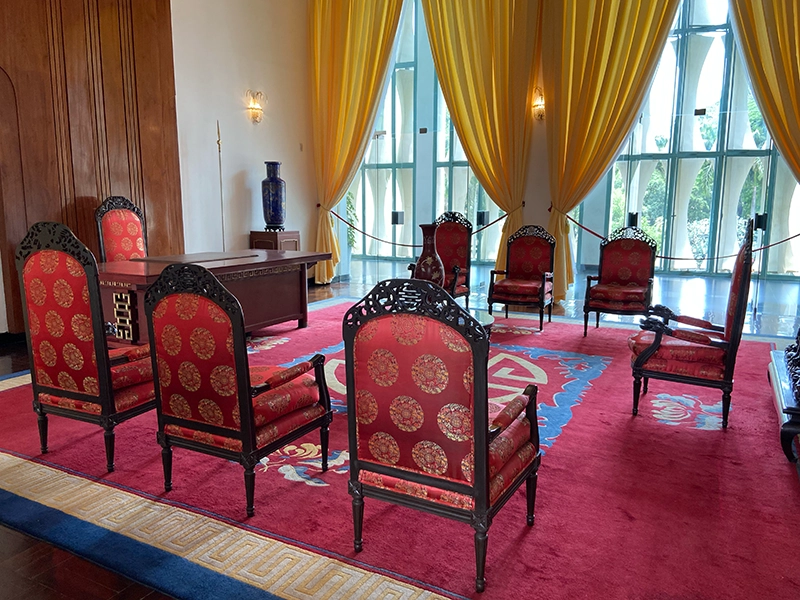

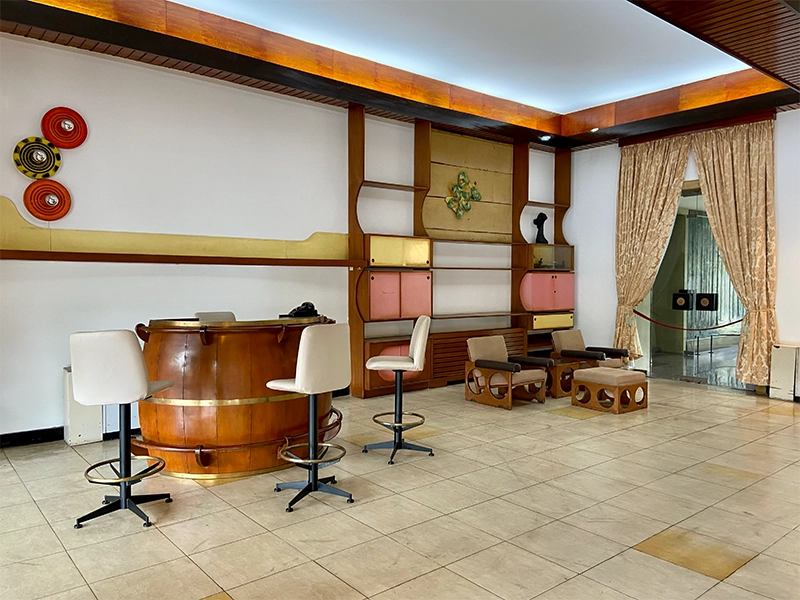
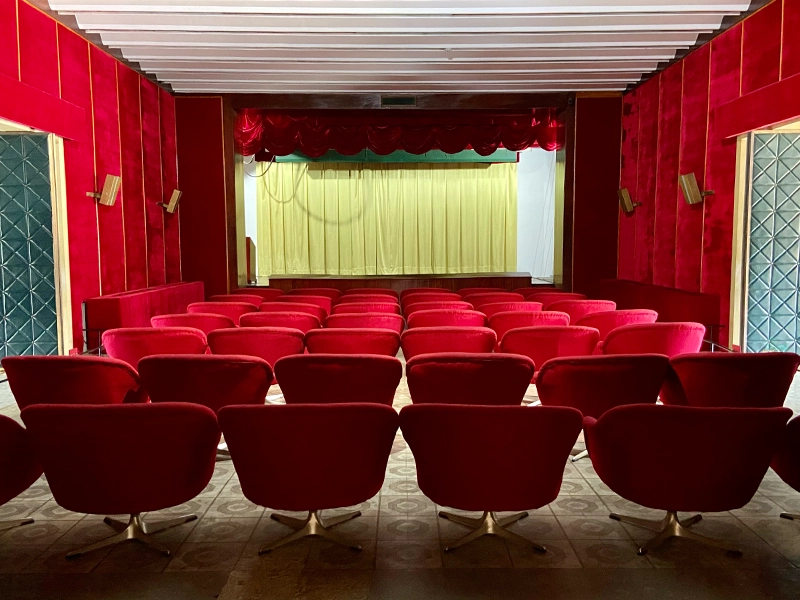
In 1965 former Air Marshal Nguyễn Cao Kỳ became prime minister (you can see still his office today). Then in 1967 Nguyễn Văn Thiệu became president, after winning an election and stayed president after the 1971 elections were subjected to new legislatures which effectively made it impossible for any of his opponents to be elected. It is reported that he did many of the same things that lead to Ngô Đình Diệm being overthrown in a coup Thiệu had been part of, namely nepotism.
Then it was the home and workplace of the president of the Republic of Vietnam until the Fall of Saigon. On the 30th of April 1975 the 30-year-long US-Vietnam-War officially ended when a North Vietnamese Army tank crashed through the main gate of the Independence Palace. The unconditional surrender and transfer of power to the Provisional Revolutionary Government was broadcast all over the radio.
In 1975 the conference for national reunification was held at the Independence Palace and it was renamed to Reunification Convention Hall. Today both names are used frequently.
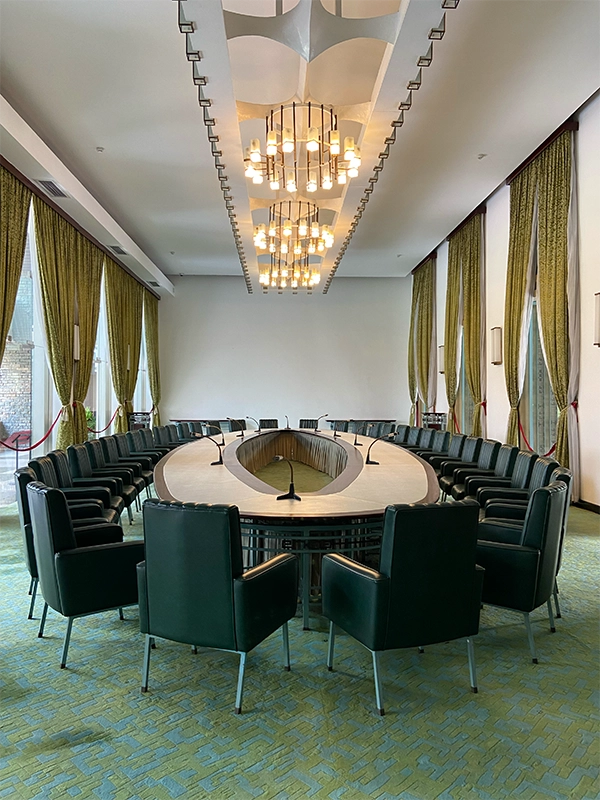

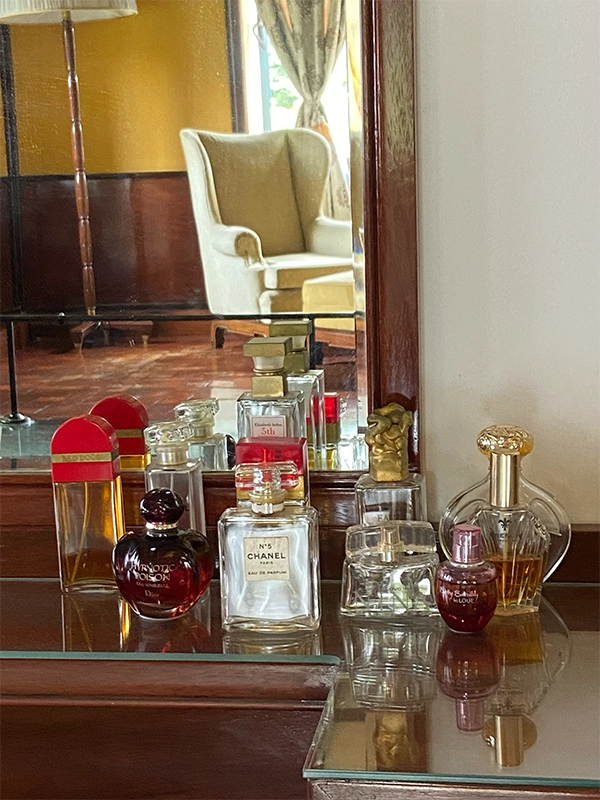
What made it so fascinating to me is not only the importance of this place in recent Vietnamese history, but the fact that you can learn about history and everyday life. There are meeting rooms, convention halls, banquet tables, but also a shooting range in the basement, as well as the well preserved white Mercedes Benz as one of the government vehicles.
In which other museum is the bathroom of significance? Look at that bathroom and tell me you’ve ever seen a more 1960s bathroom. It’s like that meme “tell me your bathroom was build (in the west) in the 1960 without telling me your bathroom was build (in the west) in the 1960″. My aunt has three bathrooms in her house. One is entirely terracotta, one is dark brown and one is apple green. 1960s bathrooms in Europe and northern America just looked like that.
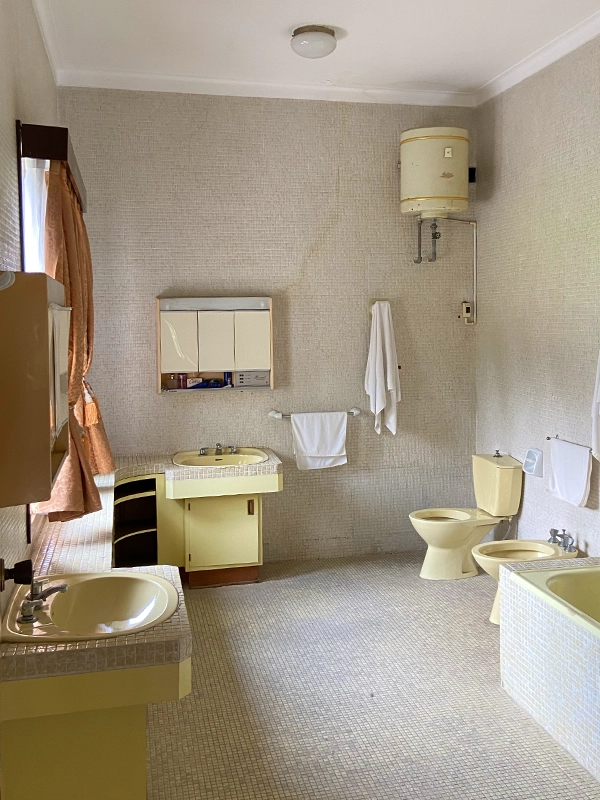

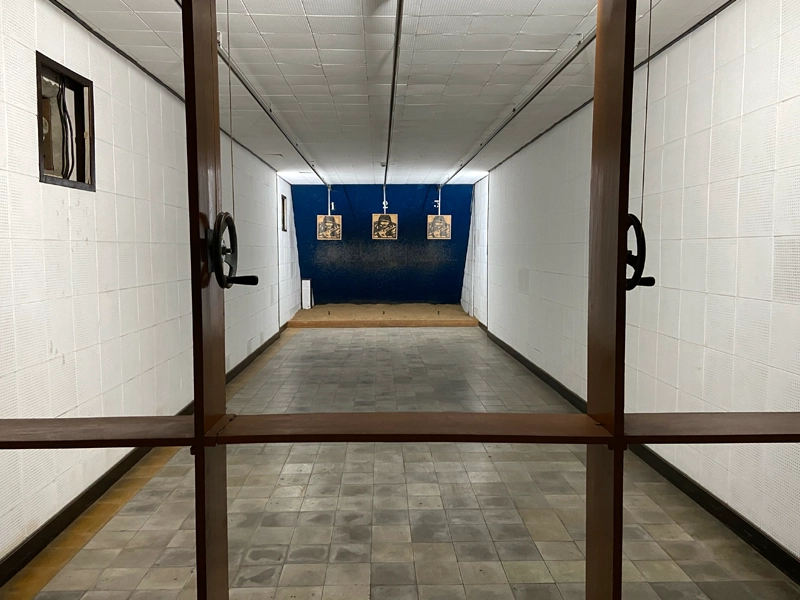
Norodom Palace Exhibition
When visiting the Independence Palace in Saigon, don’t miss our on the Norodom Palace Exhibition, which is on the grounds of the Independence Palace in a two story French manor. Event though it is accessible with one only extra ticket you can see two exhibitions here:
- Sài Gòn life under French rule
- the rise and fall of the Ngô Đình Diệm administration
Right after you enter there are several pictures and information on the construction of the Norodom Palace, then in the next hall are six short movies, created from drawings, newspaper articles, old photographs and even old films. Underneath are headphones you can use to listen to the movies, both in Vietnamese and English. Each has a different topic showcasing life in “Indochina” under the French rule. One shows the establishment of tram lines within the city of Saigon and the plans the French had for the city, if they hadn’t been forced to leave.
One floor up the walls are lined with columns showcasing the life and work of people of the Ngô family, their loyalists and rivals. The documents and artifacts, as well as photos and films were curated from Vietnamese and international historians and reporters, to get the most comprehensive picture of this time.
Three of these biographical showcases stood out:
1. Thích Quảng Đức, the Buddhist monk who set himself on fire on a busy intersection of Saigon, to protest the exclusion and persecution of Buddhists under the rule of the Ngô family.
2. Nguyễn Văn Cử, Second Lieutenant of the Republic of Vietnams Air Force, one of the two dissident pilots tried to assassinate President Ngô Đình Diệm and his immediate family by bombing the palace. He was denounced as a communist, but had nationalist ideals in mind “The Americans had slammed the door on those of us who really wanted the fight against the communists”. After the attack he fled to Cambodia where he stayed in excile until the coup. When he returned to Vietnam in 1963 he resumed this service in the RVNAF
3. General Dương Văn Minh, one of the deciding factors in the 1963 coup d’état. He acted as a double agent, convinced the Ngô brothers he was a loyalist and was able to give informations about the planned counter measures to the revolutionaries.
On the same floor you can find accords of the lives of other people, who weren’t directly involved with the Ngo families rise, rule or fall, but still had a great impact on the city of Saigon.
One of these people was the poet Sương Nguyệt Anh. She lived from 1864 to 1921 and in her time became an accomplished poet known for her brilliance and wit. She was also a journalist who wrote for the “Women’s News”, a publication that advocated for gender equality in all aspects of life. In the early 1900s this ambition fell on deaf ears, but today, we remember her as a woman far ahead of her time.
Visiting the Independence Palace in Saigon
The Independence Palace is usually open for visitors every day, except for special occasion, which the communicate on their website and usually also on their Google My Business Account. The Exhibitions on the Norodom Palace open a little later, but are also open longer, perfect to see the Palace first, then the exhibitions. There is an audio guide in several languages and I highly recommend renting one for the duration of your visit.
While the grounds of the Palace make up 120,000 sq.m, the palace itself has 95 rooms on 4 floors and a basement, so plan enough time to visit. Since each room has its own function and is constructed and decorated to meet its purpose you can’t really see one floor and then think you have seen all of it.
You can find up-to-date opening hours and ticket prices on the Website of the Independence Palace
Why you should visit the Independence Palace and Norodom Palace Exhibition in Saigon
Theres no other place in Ho Chi Minh City that so completely encompasses the cities changes from the time before and during French occupation, the Vietnam war and the unification of north and south. The rich history is almost palpable here when you pay attention and despite being used by “the loosing side” in the last war this place saw it is kept in pristine condition since it is recognized as a National Cultural and Historical Relic.



